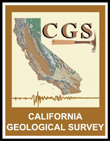
|
California Division of Mines
Speial Report 53 Igneous and Metamorphic Rocks of Parts of Sequoia and Kings Canyon National Parks, California |
ASH MOUNTAIN COMPLEX
In the vicinity of the Ash Mountain Park headquarters four rock types have been mapped together as the Ash Mountain complex. The complex covers about 1 square mile within the mapped area and extends west and south for an undetermined distance. The major rock type of the complex is a dark-gray, fine-grained rock of quartz diorite composition which is intruded by a fine grained, lighter gray rock also of quartz diorite composition. The two fine-grained types are markedly dissimilar to the plutonic types in the mapped area, and are possibly altered metamorphic rocks. Smaller amounts of quartz diorite, resembling material of the Giant Forest pluton and granite of the Cactus Point pluton are present within the complex.
Petrography. The dark-gray, fine-grained rock contains approximately 60 percent intermediate andesine and traces of potash feldspar. Quartz composes 15 percent of the average specimen as does brown biotite. The remaining 10 percent of the rock is green hornblende. Some hornblende crystals are sieve-like and have a structure resembling schiller structure. Apatite, sphene, zircon, and magnetite are also present. The average grain size of the specimens is 0.2 mm and the crystals are anhedral (photo 22).
The lighter gray fine-grained rock contains approximately 50 percent intermediate andesine (the crystals are somewhat better formed than those of the darker rock), 30 percent anhedral quartz, and 20 percent yellow- to deep-brown, pleochroic, irregular biotite. Allanite is present in some of the specimens, as well as small amounts of apatite, magnetite, and zircon. The average grain size is 0.3 mm and most of the constituents are anhedral. The composition is similar to that of biotite quartz diorite and this rock could represent dike-like intrusions of plutonic material into the dark fine grained rock. The grain size is not typical of dikes of plutonic material elsewhere in the area.
Age Relations. It is definitely established that the gray fine-grained rock is younger than the dark fine-grained rock (see photo 6). The medium-grained quartz diorite as well as the granite is locally cut by dikes of both types of the fine-grained rock and quartz diorite xenoliths are included in masses of the fine-grained gray rock. The quartz diorite and the granite also occur as dikes in the dark, fine-grained rocks in other localities. The gray fine-grained rock cuts both the granite and quartz diorite (see photo 5). Neither the granite nor the quartz diorite cuts the gray, fine-grained rock.
Origin. Fine-grained rocks of the type described in this report have received little, if any, mention in other works on the rocks of the Sierra Nevada. The lack of detailed work as well as the smaller scale mapping of older work probably accounts for the lack of discussion of the fine-grained rocks. Hamilton (1956) described some fine-grained rocks of hybrid origin, from the Huntington Lake region, that are mineralogically and texturally similar to the fine-grained rocks of the Ash Mountain complex.
The fine-grained rocks are probably fine-grained intrusives, hybrid rocks (presumably altered in place from metamorphic rocks), or mobilized hybrid rocks.
Texturally and mineralogically, both the Huntington Lake and Ash Mountain fine-grained types could be igneous rocks. Poorly developed crystals are not uncommon in the plutons elsewhere in the area. The fact that the fine-grained rocks intrude granite and quartz diorite does not settle the question of whether they intruded as igneous rocks or were mobilized during alteration.
East of Ash Mountain Park Headquarters hornfelsic fine-grained rocks grade into schistose rocks. The hornfelsic schists resemble the fine-grained rocks of the Ash Mountain complex, but the writer wishes to emphasize that he found no transition between the two types and thus cannot be sure they have the same origin. One of the dark, fine-grained specimens from the Colony Mill road has foliation that may be inherited from a metamorphic source, but in the body mapped as Ash Mountain complex the fine-grained rocks are massive.
Along the Colony Mill road, the Ash Peaks truck trail (which extends northwest from the Park Headquarters to the North Fork of the Kaweah River), and near the area of outcrop of the Ash Mountain complex, much metamorphic material is exposed. The fine-grained rocks were found only in areas of metamorphic rocks.
It is suggested that the dark complex rocks were formed by the alteration of metamorphic rocks. The textural and and mineralogical resemblance of the dark fine-grained rocks to some of the dark inclusions in the granitic rocks may mean the two types are genetically related.
| <<< Previous | <<< Contents >>> | Next >>> |
ca/cdm-sr-53/sec2.htm
Last Updated: 18-Jan-2007